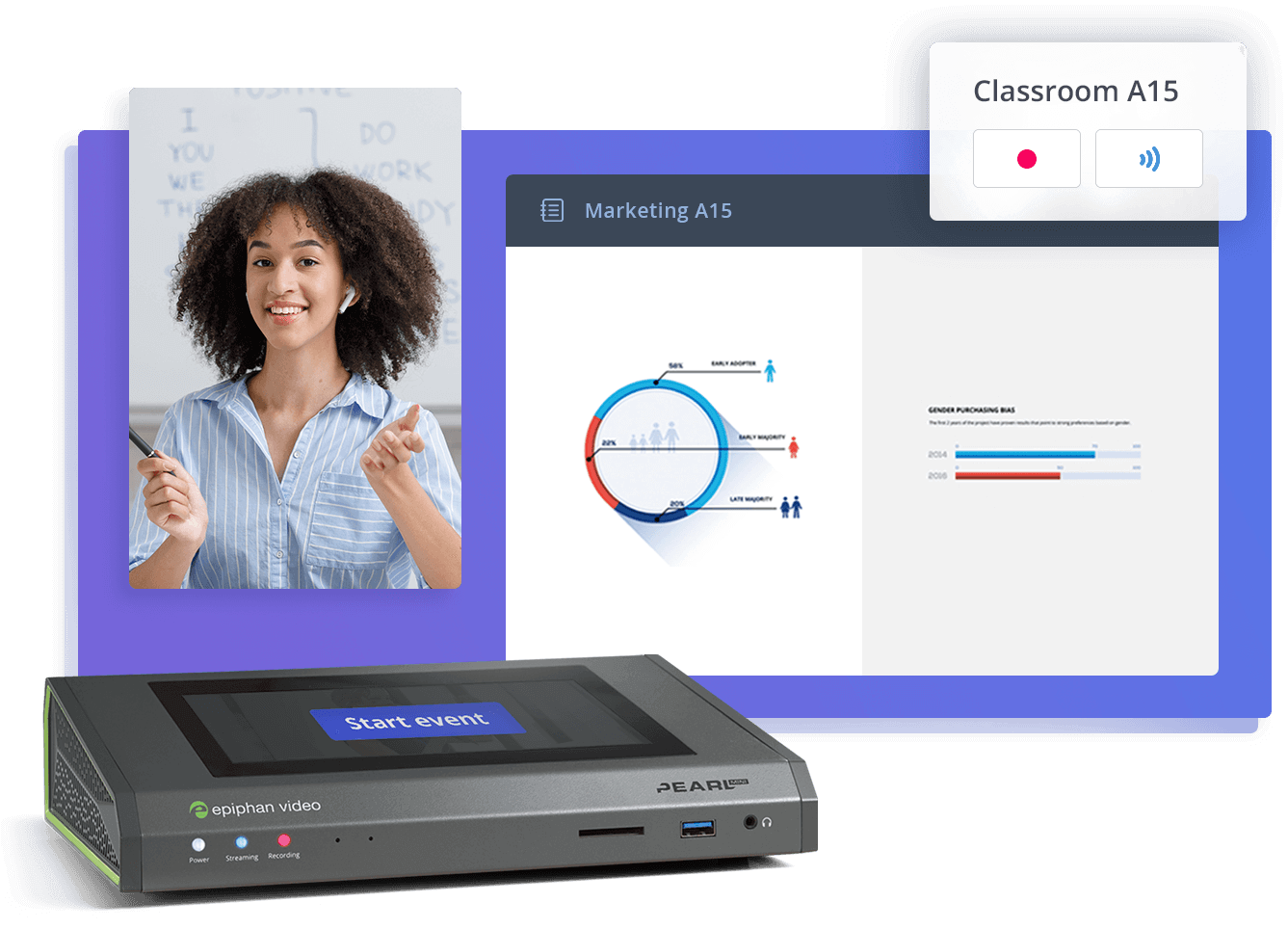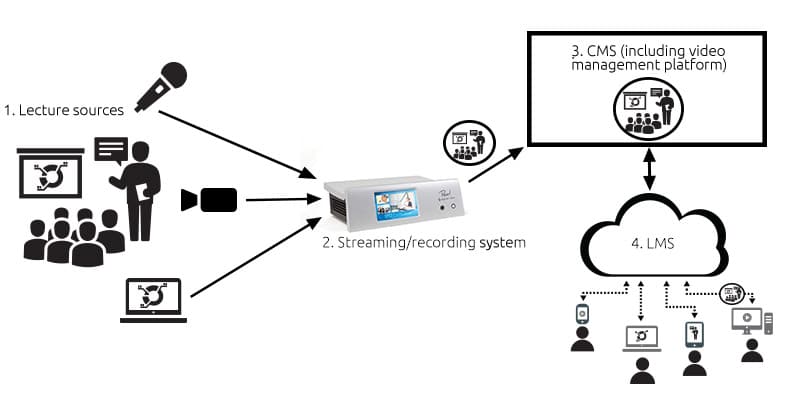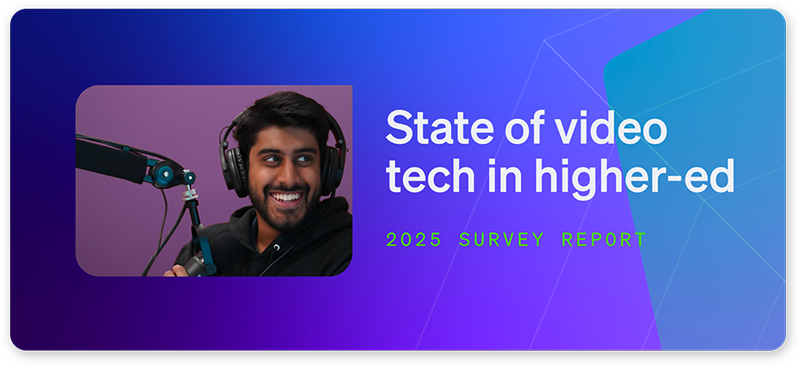If you’re familiar with recent trends in the field of Education, you’ve probably heard the term “lecture capture” tossed around. But what does it actually mean?
Put simply, “lecture capture” is any technology with the ability to record (or “capture”) lecture content and make it available in a digital format. It sounds simple, but lecture capture technology is actually very powerful.
The advancement of digital technology presents valuable opportunities for educational institutions and students alike, and lecture capture is an essential component to making it all work.

Equip your campus with best-in-class video solutions
Meet your school’s video production needs with a lineup of flexible and scalable hardware for video capture, streaming, and recording – all centrally managed. Perfect for lecture capture, online learning programs, and more.
Why use lecture capture?
Lecture capture is not intended as a replacement for in-class instruction; however, it does offer significant advantages to enhance the learning experiences of students.
- Enables the delivery of programs at a distance. You might have seen advertisements for university and college-level programs or courses offered entirely online – and it is lecture capture technology that can help make this possible. Course content can be delivered to students located internationally or to those who can’t be present in the classroom. By providing the flexibility to access the recorded lecture from any location, whenever they like, students have much more control over their learning.
- Captured lecture content available online offers value because the material is available whenever students need it. For example, a sick student can safely miss their lecture to stay and home and recover without missing any course content, or a busy student can review captured learning material during a stressful exam period. The ability to easily access course content online at any time is incredibly beneficial for learners.
- Facilitates blended learning course delivery. Blending learning is just as it sounds: combining more than one type of learning method into a program, such as combining traditional face-to-face course delivery with online learning. This kind of hybrid program is enticing to students and educators alike because it adds much-valued flexibility to course delivery and allows program customization to include both independent and collaborative learning techniques (similar to the concept of a “flipped classroom”.)
How does lecture capture work?
A typical lecture capture system boils down to include four main components:
- Cameras and microphones installed in classrooms;
- A streaming/recording system;
- A video management platform (part of the CMS); and
- A learning management system (LMS).

Here’s how it works:
- Signals from a lecture’s video/audio sources (i.e. mics, presenter laptop, cameras, document cameras) are transferred to the streaming/recording platform.
- The streaming/recording platform captures and combines the audio and video sources into a digital format and transfers the content to the video management platform (a subsection of the CMS).
- The video management platform processes and stores the captured lecture content.
- The LMS communicates with the video management platform to play back captured lecture material for students outside of the classroom (you may have heard of Moodle, Blackboard, or Canvas – these are examples of currently popular learning management systems).
When first implementing lecture capture technology, deployment typically begins incrementally and is gradually built upon over time – typically on a faculty-by-faculty or course-by-course basis. For example, an educational institution might first deploy lecture capture technology in only a single lecture hall within a specific department or course before growing to include additional rooms, buildings, and eventually, other faculties within the campus.
The future of education
While trends in distance learning and blended course delivery continue to gain momentum, lecture capture technology plays an instrumental role in making it all happen. It opens the doors for institutions in higher education to offer fresh, value-driven course delivery methods while ensuring schools remain firmly entrenched at the forefront of education technology.

2025 State of Video in Higher-Ed Report
Get a firsthand look at the mindsets, strategies, and tech shaping tomorrow’s classrooms. Download it now:

To be better usable for lecture recording, it would be really nice to have a scheduling function included on Epiphan Pearl to be able to start and stop recording/streaming without manual intervention during the lecture.
Even better would be that the Epiphan Pearl integrate the OpenCast Capture Agent Communication Protocol. OpenCast is an Open source software used by many Universities for lecture recording.